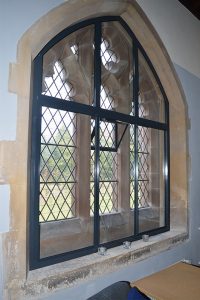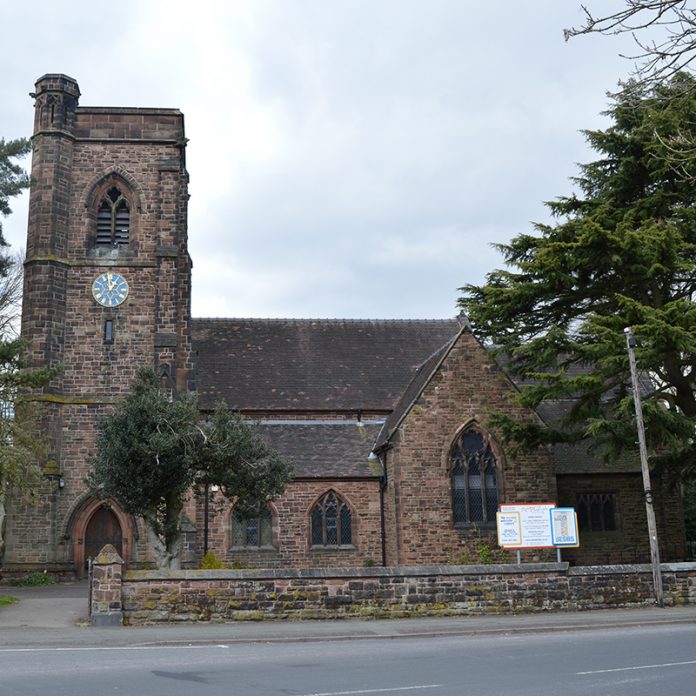Selectaglaze has installed new secondary glazing at St Philip’s, the Grade II Listed Anglican Church in Penn Fields, 3.5km south-west of the centre of Wolverhampton
Selectaglaze installed 34 units to 11 openings, a mix of 11 Series 10 slimline horizontal sliding units and 23 Series 46 slimline fixed light units.
In each of the four stone openings on the ground floor, three Series 46 fixed lights were transom coupled to a Series 10 horizonal sliding unit.
The horizontal slider was fitted in the lower half of the reveal for access to clean the primary windows, with the fixed lights coupled above to follow the tracery of the gothic arches.
A similar installation was implemented in the new space on the first floor in five wooden reveals. Series 46 fixed lights were transom coupled side by side above a Series 10 horizontal slider in each window opening with a decent cavity to reduce noise egress.
 Architects Brownhill Hayward Brown and main contractor Croft Construction were tasked with a full-scale internal refurbishment in 2020. As part of the works, the original large gothic arched church windows, which could not be replaced, needed a way to improve their thermal competence so that community activities downstairs, like children’s groups could take place in a comfortable environment.
Architects Brownhill Hayward Brown and main contractor Croft Construction were tasked with a full-scale internal refurbishment in 2020. As part of the works, the original large gothic arched church windows, which could not be replaced, needed a way to improve their thermal competence so that community activities downstairs, like children’s groups could take place in a comfortable environment.
It was essential that noise egress on the ground floor, which had internal and external facing windows was kept to a minimum, so as not to disrupt those worshiping on the upper floor.
The window reveals were deep enough to allow for the standard fixing method, creating a cavity between the primary and secondary glazing to meet the necessary acoustic reduction. The arched windows on the first floor were supported by wooden frames but could still be adapted with an identical solution to the windows on the ground floor.
St Philip’s heritage
St Philip’s was built between 1858 – 1859 by Wolverhampton architects Griffin and Weller. Constructed with rock-faced stone with ashlar dressings under tiled roofs and with magnificent original stained-glass windows, the church is the central point of the village.
The first vicar, Reverend William Dalton invested £3000 to acquire the patronage and was licensed as Perpetual Curate of the Church in October 1859. The suburb expanded through the early 20th century, with further domestic buildings and the extension of the church grounds to the west accommodate a graveyard.
In 1991 Wolverhampton Borough Council allocated St Philip’s (Penn Fields) a Conservation Area with the church forming its centrepiece. In 1996 as part of a large-scale renovation, the Church was partitioned to increase the multi-use of the building.
Worship is undertaken on the upper floor, with the ground floor playing host to community events and uses, thanks to the addition of a series of function rooms.














